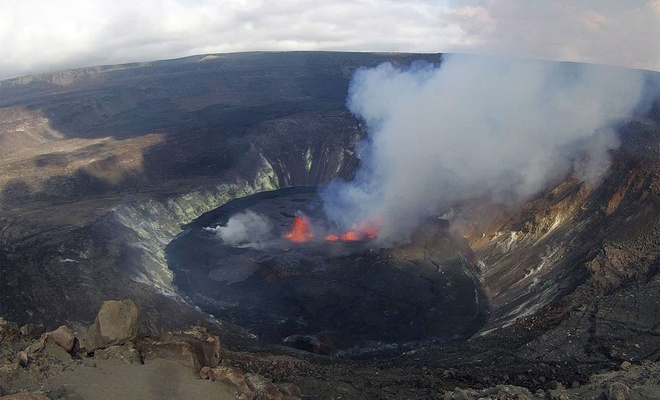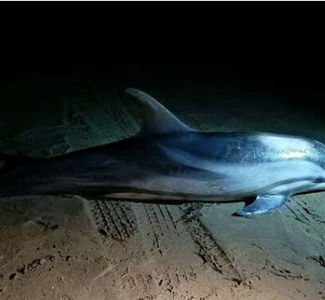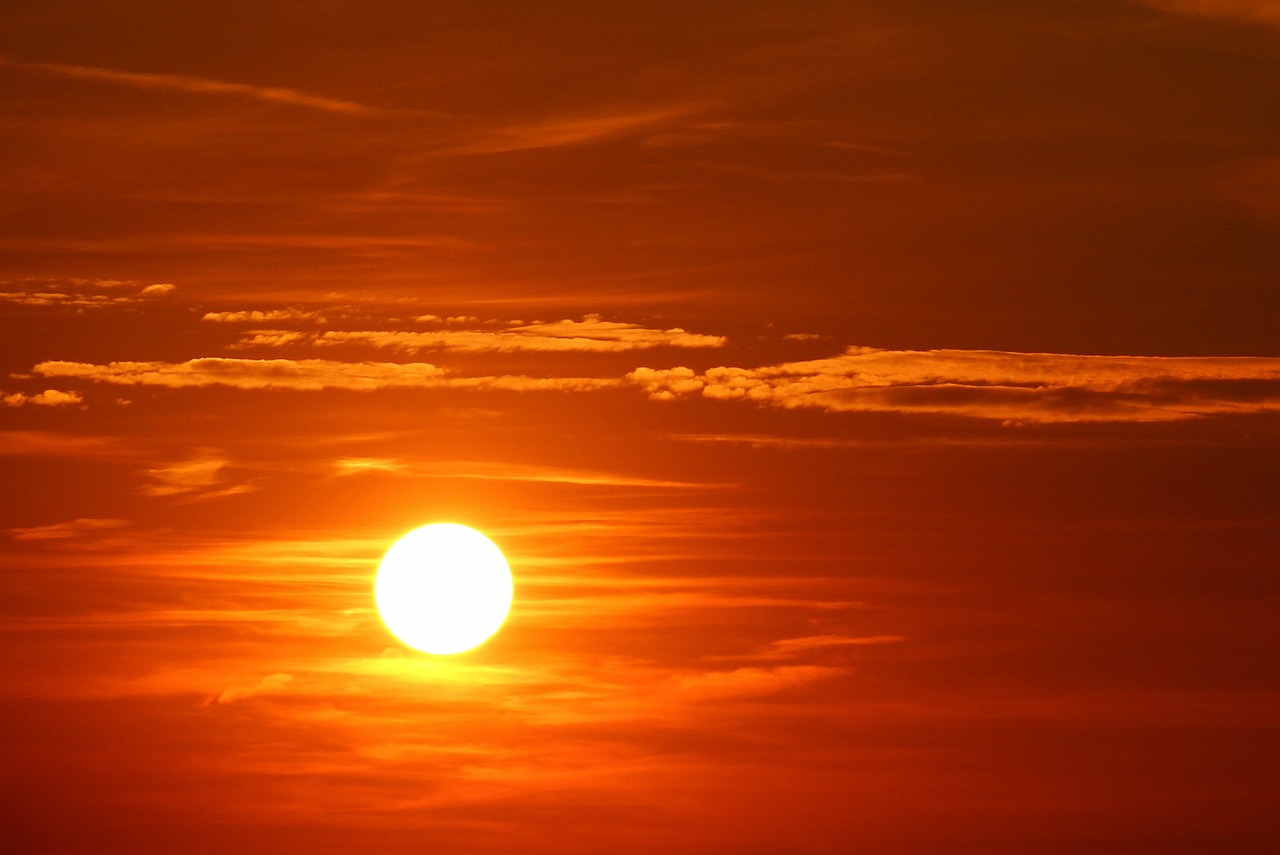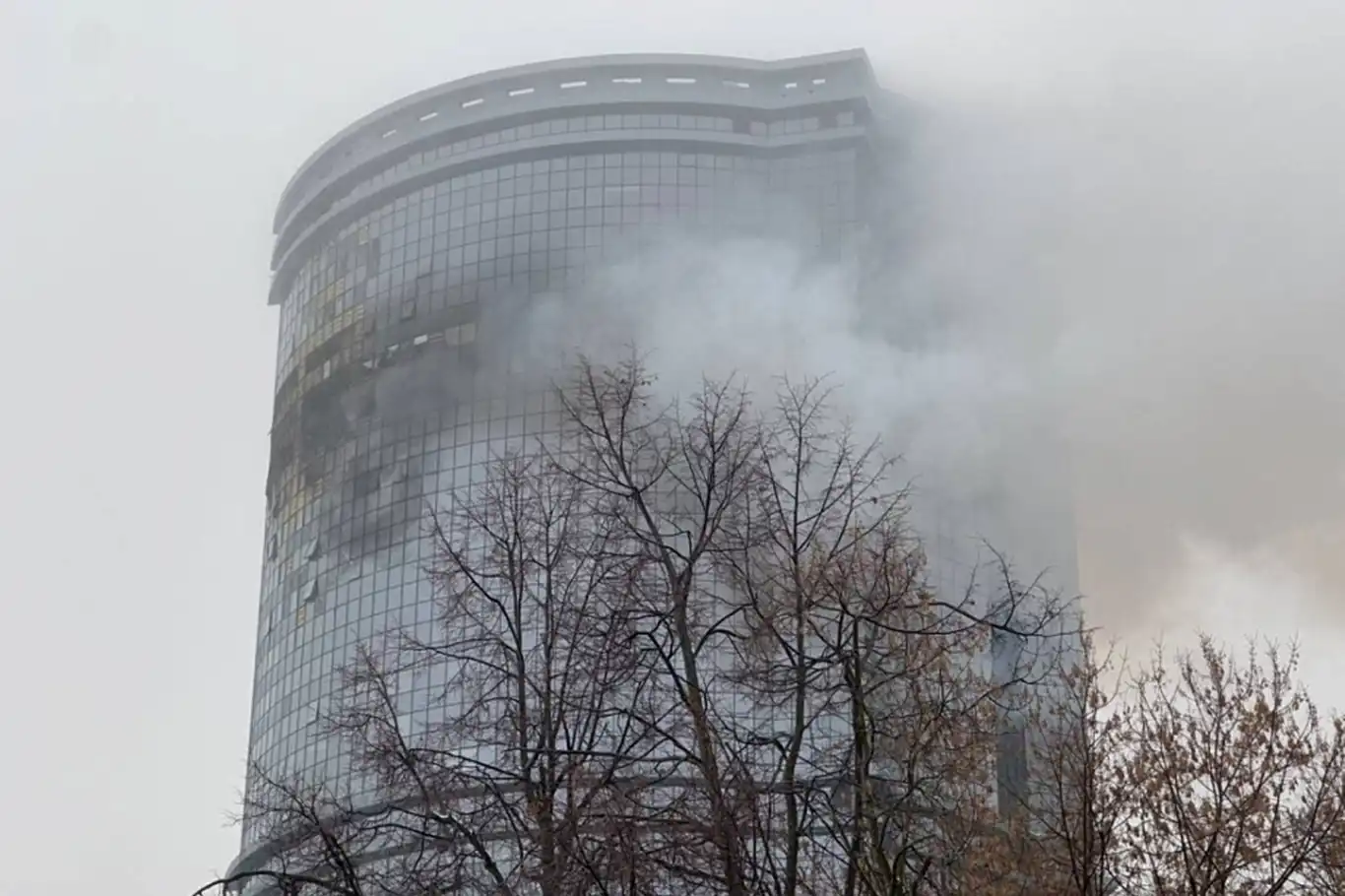USGS: Hawaii's Kilauea volcano erupting in full swing
“What was once a cooling lava lake is now a new fissure eruption!,” said the United States Geological Survey (USGS).

 Google News'te Doğruhaber'e abone olun.
Google News'te Doğruhaber'e abone olun. At approximately 3:20 p.m. HST on September 29, 2021, the USGS Hawaiian Volcano Observatory (HVO) detected a glow in Kīlauea summit webcam images indicating that an eruption has commenced within Halemaʻumaʻu crater in Kīlauea’s summit caldera, within Hawai‘i Volcanoes National Park.
Webcam imagery shows fissures at the base of Halemaʻumaʻu crater generating lava flows on the surface of the lava lake that was active until May 2021.
The USGS Hawaiian Volcano Observatory (HVO) has elevated Kīlauea’s volcano alert level from WATCH to WARNING and its aviation color code from ORANGE to RED.
Before..and..After! #Kilauea #volcano summit #eruption is in full swing. What was once a cooling lava lake is now a new fissure eruption! https://t.co/ZIxSFKk70V
— USGS Volcanoes? (@USGSVolcanoes) September 30, 2021
Follow along with updates at the #HawaiianVolcanoObservatory website. #HVO https://t.co/KGKIwXB2A8#KilaueaErupts pic.twitter.com/jCqTFsJRMS
Kilauea is the most active of the five volcanoes that together form the Big Island of Hawaiʻi. Located along the southeastern shore of the island, the volcano is between 210,000 and 280,000 years old and emerged above sea level about 100,000 years ago.
Between 2008 and 2018, Halemaʻumaʻu, a pit crater in the volcano's summit caldera, hosted an active lava lake. Kīlauea also erupted nearly continuously from vents on its eastern rift zone between January 1983 and April 2018, causing considerable property damage, including the destruction of the towns of Kalapana and Kaimū along with the community's renowned black sand beach, in 1990. (ILKHA)



















































